Type 1 Diabetes

Diabetes or Diabetes mellitus is a chronic life-threatening disease in which the pancreas does not produce enough insulin or when it does produce insulin but the body can’t utilise it properly. Insulin is a hormone that is produced by the cells inside the pancreas. Insulin helps transfer glucose to the cells so it can be used for energy. According to the World Health Organisation (WHO), 8.7 percent of Indians aged between 20 and 70 are diabetic. This is due to various factors such as living a sedentary life, eating unhealthy foods, a bad lifestyle, poor work-life balance, etc.
Type 1 diabetes is a medical condition in which the immune system destroys the cells in the pancreas that produce insulin for the body. These cells are known as Beta cells.
Insulin is necessary for transferring glucose into various cells of the body to use as energy. In diabetes, the glucose does not get transferred into the cells, leading to excess buildup of sugar in the blood. This causes a spike in blood sugar levels which is dangerous.
Unlike type 2 diabetes, which is usually diagnosed in adulthood, type 1 diabetes occurs mostly in children and adolescents. It is also known as Juvenile diabetes because of this. Type 2 diabetes is a chronic disease and is untreatable. It can only be managed by taking precautions, maintaining a healthy weight, and having a proper diet.
In type 1 diabetes, it is necessary to take insulin injections 4 to 6 times every day to keep blood sugar levels under control. There are multiple ways for insulin delivery such as insulin pumps, pens, and syringes. Only about 5 to 10 percent of total diabetic patients are diagnosed with type 1 diabetes.
Symptoms of Type 1 Diabetes
1. Increased thirst

The condition of constant thirst is very common in type 1 diabetes patients. This condition is also known as Polydipsia. In polydipsia, A person will be thirsty throughout the day even after drinking lots of water. Polydipsia usually happens due to intense exercise, eating too much salty food, hot weather and dehydration. However, Polydipsia can also happen because of type 1 diabetes since your kidneys will need more water to rinse out the excess sugar from the body.
2. Increased hunger

Also known as Polyphagia, increased hunger is a symptom of type 1 diabetes. Your body converts glucose into energy to be used but if you have diabetes, glucose does not get converted into energy. Since the body requires energy, it will take energy from other sources such as fats, leading to increased hunger in diabetic patients.
3. Frequent urination

People who have type 1 diabetes pee often. It happens for the same reason as increased thirst in diabetic people. The symptom of frequent urination is also known as polyuria. Frequent urination happens because the kidneys have to work extra hard and use more water than usual in order to rinse out the excess sugar from the body. A diabetic patient will pee more often and hence drink more water as well.
4. Blurred vision

A common symptom of type 1 diabetes is blurred vision. Blurred vision is caused by high blood sugar levels. When blood sugar rises rapidly, it causes swelling in the eye lens. This swelling can cause blurry vision in diabetic patients. However, blurry vision can be cured if blood sugar levels go back to normal. It can take a few weeks for your vision to become normal again.
5. Skin infections

Diabetes can cause skin infections in patients. Diabetes can cause dry skin and also makes the patients more prone to illnesses and diseases. Diabetes causes the cells to become nutrient deficient because of the lack of insulin. This can lead to skin infections since the skin lacks immunity-boosting nutrients and minerals. Skin infections are a cause of concern in diabetic patients and can be cured with proper management of blood sugar levels.
6. Delay in wound healing

Diabetes can lead to poor blood circulation in the body. Poor blood circulation causes nutrient deficiency in diabetic patients because the blood carries essential nutrients and minerals slowly to the wounds. This often leads to slow healing of wounds in diabetic patients. Sometimes the wound may never get healed which can lead to many deadly infections for a diabetic person.
7. Unexpected weight loss
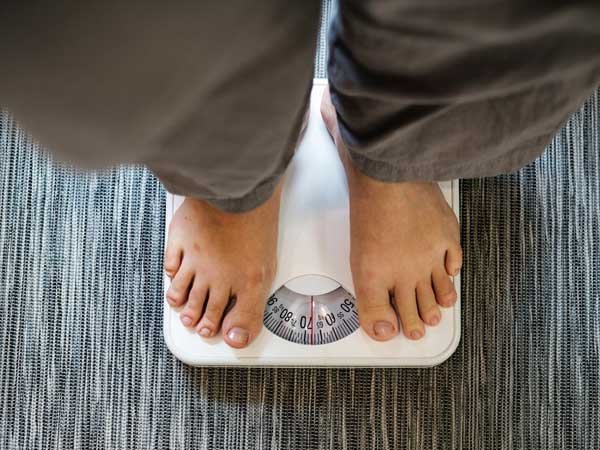
In type 1 diabetes, there is little or no production of insulin in the pancreas which leads to poor delivery of glucose to the cells. This causes the body to use fats and muscles for energy leading to weight loss in diabetic patients. Diabetes also causes kidneys to work extra hard to excrete the excess sugar from the body which can also lead to unexplained weight loss. Unexpected weight loss is more common in type 1 diabetes than in type 2 diabetes.
8. Yeast infections
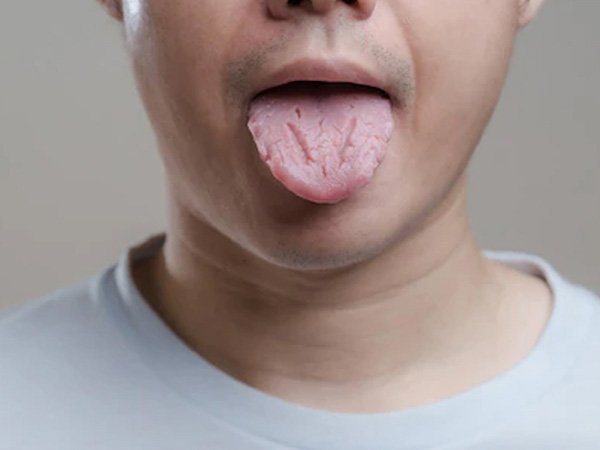
Type 1 diabetes can also lead to yeast infections in patients. Yeast infections can happen to both genders but are more common in women. A rapid increase in blood sugar can increase the chances of yeast infections since yeast feeds on sugar. Diabetes can cause a yeast infection to overgrow and cause discomfort to the patient.
9. Fatigue

Fatigue is a common symptom of type 1 diabetes. Fatigue is caused in diabetic patients because of a lack of energy due to the inability of converting glucose into energy. All the glucose in the body of a diabetic patient goes to waste. Even if Diabetic patients try to keep their blood sugar levels in control, they will still suffer from fatigue due to the lack of energy.
10. Headache

Constant fluctuations in the blood sugar levels of type 1 diabetes patients can cause headaches. Headache is usually caused by high or low blood sugar levels. Headaches in diabetic patients may lead to more serious problems in the future and hence should be treated as soon as possible. If you want to reduce the chances of headaches then it is crucial that you maintain steady blood sugar levels.
11. Mood swings and irritation

Fluctuations in blood sugar levels of diabetic patients can also cause mood swings and irritation. It is common for type 1 diabetes patients to feel cranky at times. Constant highs and lows in blood sugar levels can cause the mood of diabetic patients to change drastically. Type 1 diabetes can cause depression, aggression, anxiety and severe mood swings in patients.
Causes of Type 1 Diabetes
1. Genetics

Genetics is the biggest cause of type 1 diabetes. Type 1 diabetes is passed down from generations and is more common in children and adolescents. There is a high probability that the child of a Type 1 diabetic patient will go on to be diagnosed with it as well. Type 1 diabetes cannot be prevented, it may or may not happen.
2. Environmental

Type 1 diabetes can also be caused by environmental factors such as pollution, allergies to certain things such as milk, and certain infections. Type 1 diabetes can be caused by viral infection as well as bacterial infection. Certain infections can cause reactions in the pancreas that can cause the immune system to destroy beta cells in the pancreas. Researchers have only recently discovered the link between infections and type 1 diabetes, hence not much research has been done on the subject.
3. Autoimmune disease

An Autoimmune disease is one in which the immune system attacks the body mistakenly. The immune system fights off and kills various viruses and bacteria that enter the body to keep us healthy. However, Autoimmune disease makes the immune system unable to differentiate between the cells of the body and foreign cells such as viruses and bacteria. Some autoimmune diseases cause the immune system to attack the beta cells that produce insulin in the pancreas, causing type 1 diabetes.
4. Race

Another factor that causes type 1 diabetes is the race of a person. Some ethnicities are more likely to have type 1 diabetes due to their lifestyle, eating habits, and genetic makeup. Africans and Asians are more likely to be diagnosed with type 1 than Europeans. India and China are the most affected countries by diabetes in the world.
5. Injury to the pancreas
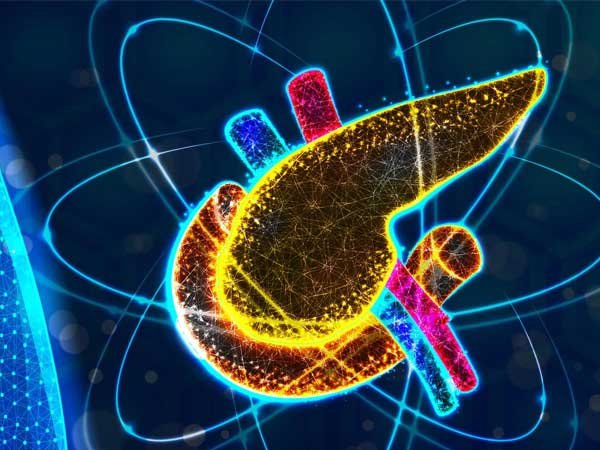
Injury to the pancreas can also cause type 1 diabetes. Injury to the pancreas can be caused by Chronic pancreatitis which is an inflammation of the pancreas that keeps getting worse with time. Chronic pancreatitis is a long-term disease that can cause injury to the pancreas due to continuous inflammation. This will lead to diabetes because of poor insulin production.
Diagnosing Type 1 Diabetes
1. A1C testing
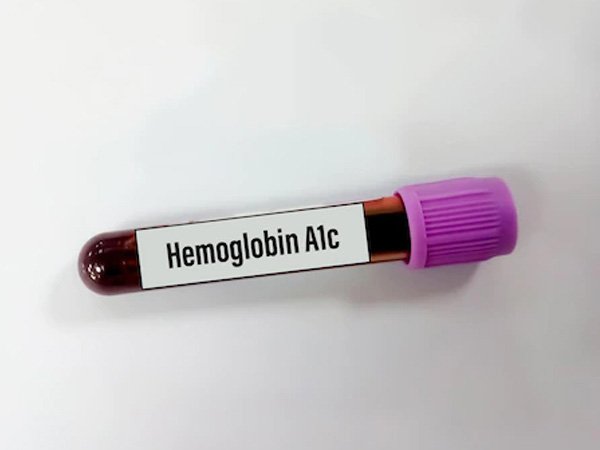
A1C test is a blood test that is used to diagnose type 1 and type 2 diabetes. It is done to determine the red blood cells that have sugar-coated hemoglobin. A1C refers to the glucose-hemoglobin part of a red blood cell. An A1C of more than 6.5 percent indicates that the person has diabetes. An A1C test lets you know how well you are keeping your blood sugar levels in control. An A1C can test blood glucose levels for about 2 to 3 months.
2. Fasting plasma glucose test
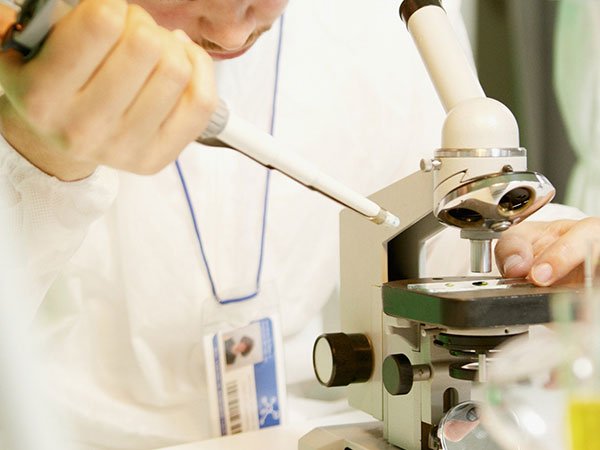
It is also known as the fasting blood glucose test. A fasting plasma glucose test is a technique to measure blood sugar levels in the body. It is a simple and inexpensive test that can provide accurate results about the blood sugar levels in the body. Fasting plasma glucose test requires you to fast for several hours before the test. A fasting plasma glucose test is recommended every 3 months for people older than 35 years. If a fasting glucose test shows a reading of 126 or higher, then the person is diabetic.
3. Random plasma glucose test

Unlike fasting plasma glucose tests which require fasting for several hours before the test, Random plasma glucose tests can be conducted at any time. A random glucose test is a method of testing blood glucose levels in the body. However, random plasma glucose tests are not recommended for diagnosing prediabetes because they can fluctuate due to short-term lifestyle and diet changes. Random plasma tests are conducted in order to determine whether a person has diabetes or not. A random plasma glucose test of 200 and higher means a person has diabetes.
4. Oral glucose tolerance test

Oral glucose tolerance test determines the glucose tolerance level of a person. It is more suitable for type 2 diabetes but can give accurate results for type 1 diabetes as well. During an Oral glucose tolerance test, glucose is administered to a patient and then a blood test is conducted to determine how the glucose reacted in the blood. It compares blood sugar levels before and after administering glucose. If an Oral glucose tolerance test shows a reading of 200 and higher, then the patient has diabetes.
5. Antibody test
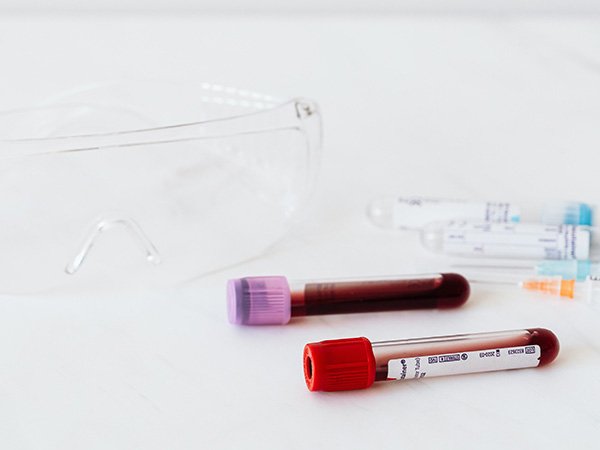
Another method for checking the blood sugar levels of a person is an Antibody test. It is a test which checks the antibodies that are present in the body. Antibodies fight off germs, viruses, and bacteria. An Antibody test is useful for determining whether a person has type 1 diabetes or not. It can show results even before the onset of type 1 diabetes because certain antibodies develop before being diagnosed with type 1 diabetes.
6. Urinalysis

Though it is not as accurate as a blood glucose test, Urinalysis is still a good method to determine if a person has diabetes or not. Urine analysis is easy to carry out and shows quick results. It shows the amount of glucose present in the urine. Urine analysis is used when blood glucose tests are not possible or difficult to conduct.
Complications of Type 1 Diabetes
1. Cardiovascular disease

Diabetes patients are at a higher risk of developing Cardiovascular disease. Diabetes leads to poor circulation of blood and causes a buildup of sugar. Type 1 Diabetes can often lead to Angina, Heart attack, and stroke. Diabetic patients should maintain healthy blood sugar levels to reduce the risk of suffering from heart disease.
2. Diabetic Retinopathy

It is a condition of the eye in which the blood vessels in the retina get affected. It is a major complication of type 1 diabetes and can lead to vision loss or very poor eyesight in diabetic patients. Type 1 Diabetes patients should maintain good blood sugar levels by staying active, eating healthy and consuming anti-diabetic medicines regularly in order to reduce the chances of diabetic retinopathy.
3. Neuropathy
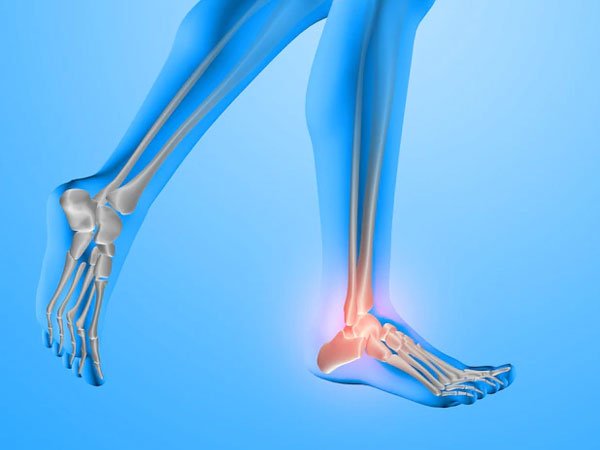
It is a condition of the nerves which causes numbness and tingling in the hands and feet of the affected person. Neuropathy is a complication of diabetes and can be caused if blood sugar levels are not maintained. Neuropathy can also cause pain in the limbs and can also lead to loss of movement in them. Diabetic patients should keep their blood sugar levels under control to reduce the chances of Neuropathy.
4. Kidney Damage/ Nephropathy

Another complication of diabetes is kidney damage. Diabetes causes the kidneys to work extra hard in order to excrete the excess sugar from the blood. Over time this can cause damage to the blood vessels of the kidneys that excrete the excess sugar from the blood. To reduce the risk of kidney damage, diabetic patients should reduce their sugar intake and maintain a healthy diet and exercise routine.
5. Infections

Type 1 Diabetes can often cause infections indirectly. Type 1 Diabetes causes the immune system to weaken due to poor delivery of nutrients and minerals to the cells because of lack of insulin production. Nutrient deficiency in type 1 diabetes patients can cause many infections and flu which can make their conditions even worse. Diabetic patients should take good care of their health to reduce the risk of infections.
6. Issues in pregnancy

Babies who are born to mothers that are diagnosed with type 1 diabetes are at a much higher risk of being born with birth defects. Poor blood sugar levels in the mother can lead to poor development of the child inside the womb. Diabetes also causes excess sugar in the baby and they are at a much higher risk of being diagnosed with type 1 diabetes.
7. Damage to blood vessels
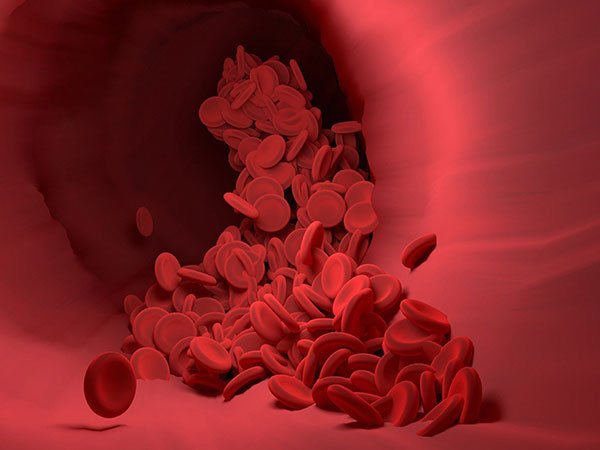
Type 1 Diabetes can cause damage to the blood vessels due to the buildup of excess sugar in them. It causes the blood vessels to become narrow, causing poor blood circulation in the patients. Blood vessel damage can often lead to many life-threatening problems such as Haemorrhage, heart attack, stroke etc. It is crucial that diabetic patients keep their blood vessels healthy by following a diet that does not contain much sugar and by leading a healthy lifestyle.
8. Diabetic Ketoacidosis
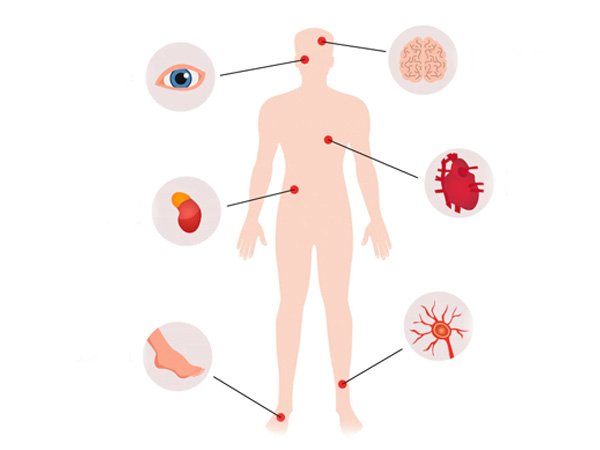
Another complication of type 1 diabetes is Diabetic ketoacidosis. It is a life-threatening complication in which the body produces high amounts of blood acids known as ketones. Lack of energy to the cells of the body caused by poor insulin delivery leads to the use of muscles and fats for getting energy. This causes ketones to build up in the bloodstream. If left untreated, it can cause diabetic ketoacidosis. Symptoms of Ketoacidosis develop quickly and require medical attention.
Treating or managing Type 1 diabetes
1. Eating healthy

Eating healthy is the best way to keep blood sugar levels under control and reduce the risk of further complications for type 1 diabetes patients. You should follow a diet that consists of fruits, vegetables and whole foods that are good for your health. Your diet should contain a very low amount of sugar and high glycemic index foods. Try creating a meal plan for the whole week to ensure you stay disciplined.
2. Being Physically active

Being physically active and exercising regularly can reduce the risk of further complications in type 1 diabetic patients. Exercise improves the blood circulation in the body which can help diabetic patients. Exercising also helps in the excretion of excess sugar from the body and improves the efficiency of insulin delivery in type 1 diabetes patients.
3. Get regular checkups
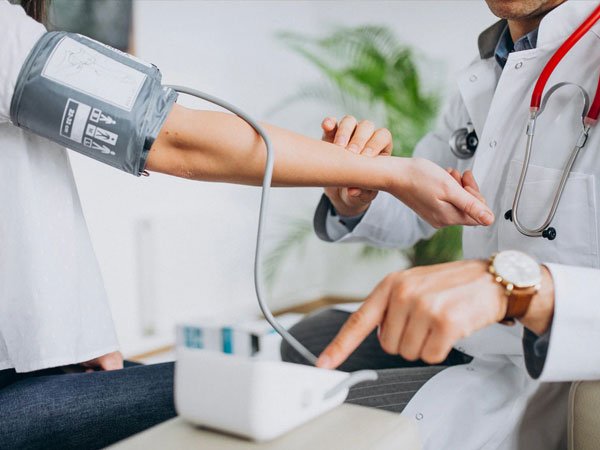
To keep their blood sugar levels under control type 1 diabetic patients should get regular checkups done. Regular checkups allow type 1 diabetes patients to gather information about their blood sugar levels and what they can do in order to improve blood sugar management. Getting regular checkups can reduce the risk of further complications in diabetic patients because they can solve the problems before they get any worse.
4. Stop smoking

Smoking can raise the risk of further complications in type 1 diabetes patients. It can often cause diabetic retinopathy, kidney damage, heart disease etc. Smoking leads to poor blood circulation in diabetic patients leading to problems such as neuropathy, infections, poor wound healing, etc. Type 1 diabetic patients should quit smoking in order to manage their blood sugar levels and reduce the risk of further complications.
5. Limit alcohol

Alcoholic drinks are high caloric drinks and contain a lot of sugar in them. It can be very risky for type 1 diabetic patients and can cause many complications such as neuropathy, diabetic retinopathy, etc. Moderate alcohol consumption can also cause blood sugar levels to become dangerously low. Diabetic patients should reduce their alcohol intake in order to maintain proper blood sugar levels.
6. Regular insulin injections
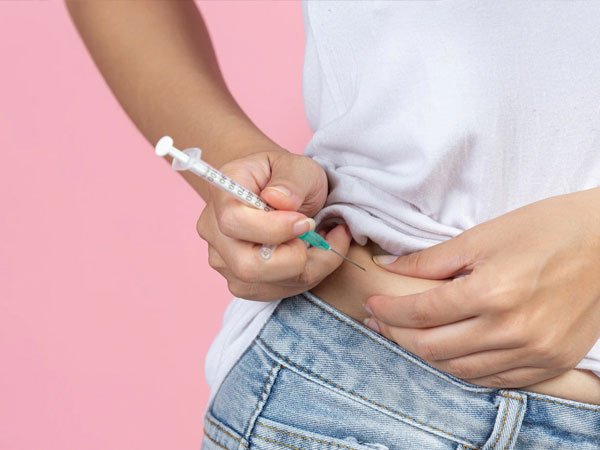
Type 1 diabetic patients require multiple insulin injections throughout the day in order to maintain their blood sugar levels. These injections can be given through various methods such as a syringe, pump and pen. To reduce the risk of further complications and for managing proper blood sugar levels, type 1 diabetic patients need to take 2 to 6 injections in a single day or use an insulin pump throughout the day.
7. Monitor blood glucose levels
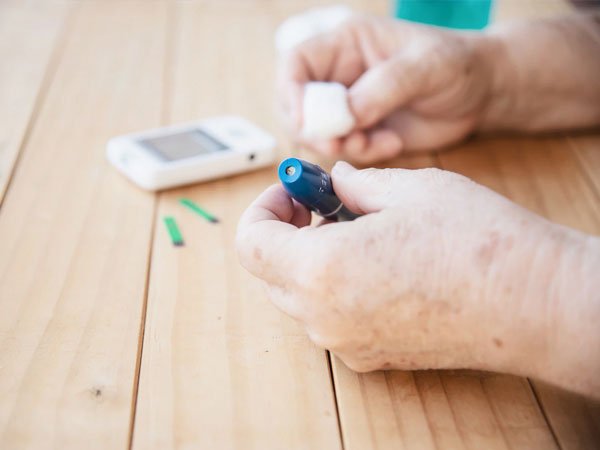
In addition to regular insulin injections, type 1 diabetes patients are also required to monitor their blood glucose levels throughout the day. Monitoring blood glucose levels is important for type 1 diabetes patients because it informs them about how their body is reacting to insulin delivery. Monitoring blood glucose levels can alarm the patients about anything that is of concern with the insulin delivery as well as the blood sugar levels. To monitor blood glucose levels, patients can use a glucometer or a Continuous glucose Monitor (CGM).